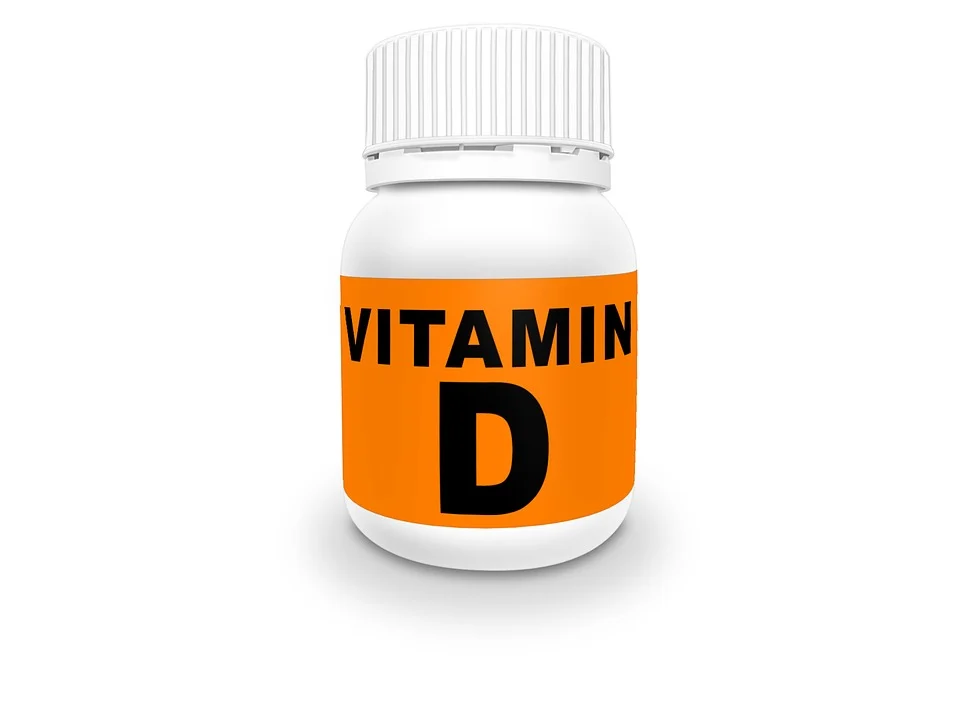Vitamin D, also known as the “sunshine vitamin,” is a fat-soluble vitamin that plays an important role in several bodily processes, including bone health, immune function, and cell growth and division. The primary source of vitamin D is the sun, as the skin synthesizes vitamin D when exposed to UVB radiation.
Vitamin D can also be obtained through diet, such as fatty fish (e.g., salmon, tuna), egg yolks, and fortified foods (e.g., milk, cereal). Vitamin D supplements are also available in various forms, including tablets, capsules, and drops.
The recommended daily intake of vitamin D varies depending on age, sex, and other factors. In general, the recommended daily intake for adults is 600-800 IU (International Units) per day, although some experts suggest that higher levels may be necessary for optimal health. It’s always a good idea to consult with a healthcare professional before starting any new supplement regimen.
What Is Vitamin D Deficiency?
Vitamin D deficiency occurs when the body does not have enough vitamin D to perform its essential functions. There are several causes of vitamin D deficiency, including inadequate dietary intake, insufficient exposure to sunlight, and problems with vitamin D absorption.
Inadequate dietary intake: Vitamin D is not present in many foods naturally, and it is often difficult to obtain enough vitamin D from food alone. People who follow strict vegetarian or vegan diets, for example, may be at risk of vitamin D deficiency if they do not consume fortified foods or supplements.
Insufficient exposure to sunlight: The skin synthesizes vitamin D when exposed to UVB radiation from the sun. People who live in areas with limited sunlight or spend little time outdoors, or those who wear clothing that covers most of their skin, may not produce enough vitamin D.
Problems with vitamin D absorption: Vitamin D requires certain nutrients, such as magnesium and zinc, to be absorbed and utilized properly in the body. Individuals with conditions that affect nutrient absorption, such as inflammatory bowel disease or celiac disease, may be at risk of vitamin D deficiency.
What are the 14 Signs Of Vitamin D Deficiency?
Here are 14 signs of vitamin D deficiency that you should be aware of:
- Fatigue and Tiredness: Fatigue and tiredness are common symptoms of vitamin D deficiency. This is because vitamin D plays a role in the production of energy within the body. If you are feeling sluggish, lacking energy and having difficulty staying awake throughout the day, it could be a sign that your vitamin D levels are low.
- Bone Pain and Weakness: One of the primary roles of vitamin D is to support bone health. When you have a deficiency of vitamin D, it can lead to weak bones, and bone pain. You may experience pain in your bones, muscles, and joints or weakness in the muscles.
- Muscle Weakness: Vitamin D plays a critical role in muscle function, and deficiency can lead to muscle weakness, especially in the hips and legs. This can make it difficult to climb stairs or even stand up from a sitting position.
- Mood Changes: Vitamin D plays a role in the regulation of mood, and low levels have been linked to depression and other mood disorders. If you’re feeling down, irritable or experiencing mood swings, it could be a sign of vitamin D deficiency.
- Difficulty Sleeping: Vitamin D plays a role in the regulation of the sleep-wake cycle. If your vitamin D levels are low, it can make it difficult to fall asleep or stay asleep throughout the night.
- High Blood Pressure: Studies have found that low vitamin D levels are associated with high blood pressure. This could be due to the fact that vitamin D helps regulate blood vessels and the production of hormones that affect blood pressure.
- Decreased Immunity: Vitamin D plays a critical role in immune function, and a deficiency can lead to decreased immunity and an increased risk of infections, such as colds and flu.
- Skin Changes: Vitamin D deficiency can lead to changes in the skin, including dryness, itching, and flaking. In severe cases, it can lead to skin disorders such as eczema.
- Increased Risk of Chronic Diseases: Low vitamin D levels have been linked to an increased risk of chronic diseases such as heart disease, diabetes, and certain types of cancer.
- Poor Wound Healing: Vitamin D is important for wound healing, and a deficiency can lead to slow healing times and an increased risk of infection.
- Hair Loss: Vitamin D plays a role in the growth and maintenance of hair follicles, and a deficiency can lead to hair loss or thinning.
- Muscle and Joint Pain: Vitamin D deficiency can cause muscle and joint pain, especially in the back and legs.
- Dental Problems: Vitamin D is important for dental health, and a deficiency can lead to dental problems such as weak or brittle teeth and gum disease.
- Obesity: Vitamin D deficiency has been linked to obesity, as low levels of vitamin D may affect the production of hormones that regulate weight and metabolism.
If you are experiencing any of these signs of vitamin D deficiency, it is important to speak with your healthcare provider. They can perform a blood test to determine your vitamin D levels and recommend appropriate treatment, such as vitamin D supplements or increased sun exposure.
Treatment Of Vitamin D Deficiency
The treatment of vitamin D deficiency involves increasing the levels of vitamin D in the body through various methods. Here are some ways to treat vitamin D deficiency in detail:
- Sun exposure: One of the easiest and most natural ways to increase vitamin D levels is to spend time in the sun. The skin produces vitamin D when it is exposed to sunlight. The amount of vitamin D produced depends on the time of day, season, latitude, skin color, and age. It is recommended to expose the skin to the sun for 10 to 30 minutes, two to three times a week, between 10 am and 3 pm, without sunscreen. However, excessive exposure to the sun can lead to skin damage and increase the risk of skin cancer.
- Dietary changes: Vitamin D can also be obtained through diet. Foods that are high in vitamin D include fatty fish (salmon, mackerel, and tuna), egg yolks, beef liver, and fortified foods such as milk, orange juice, and cereals. However, it can be difficult to get enough vitamin D through diet alone, especially for those who follow a vegan or vegetarian diet.
- Vitamin D supplements: Vitamin D supplements are often recommended to treat vitamin D deficiency. There are two types of vitamin D supplements: vitamin D2 (ergocalciferol) and vitamin D3 (cholecalciferol). Vitamin D3 is the preferred form of supplementation as it is more effective at increasing vitamin D levels in the body. The recommended daily intake of vitamin D is 600-800 IU for adults, although some people may require higher doses depending on their individual needs.
- Treatment of underlying conditions: Sometimes, vitamin D deficiency can be caused by an underlying medical condition, such as celiac disease, Crohn’s disease, or kidney disease. Treating these underlying conditions can help increase vitamin D levels in the body.
- Monitoring: It is important to monitor vitamin D levels regularly to ensure that they are within the normal range. This can be done through a blood test called 25-hydroxyvitamin D [25(OH)D] test. Depending on the severity of the deficiency, the doctor may recommend retesting after a few months to see if the treatment is working.
In conclusion, the treatment of vitamin D deficiency involves a combination of sun exposure, dietary changes, vitamin D supplements, and the treatment of underlying medical conditions. It is essential to work with a healthcare provider to determine the best course of action and to monitor vitamin D levels regularly.






